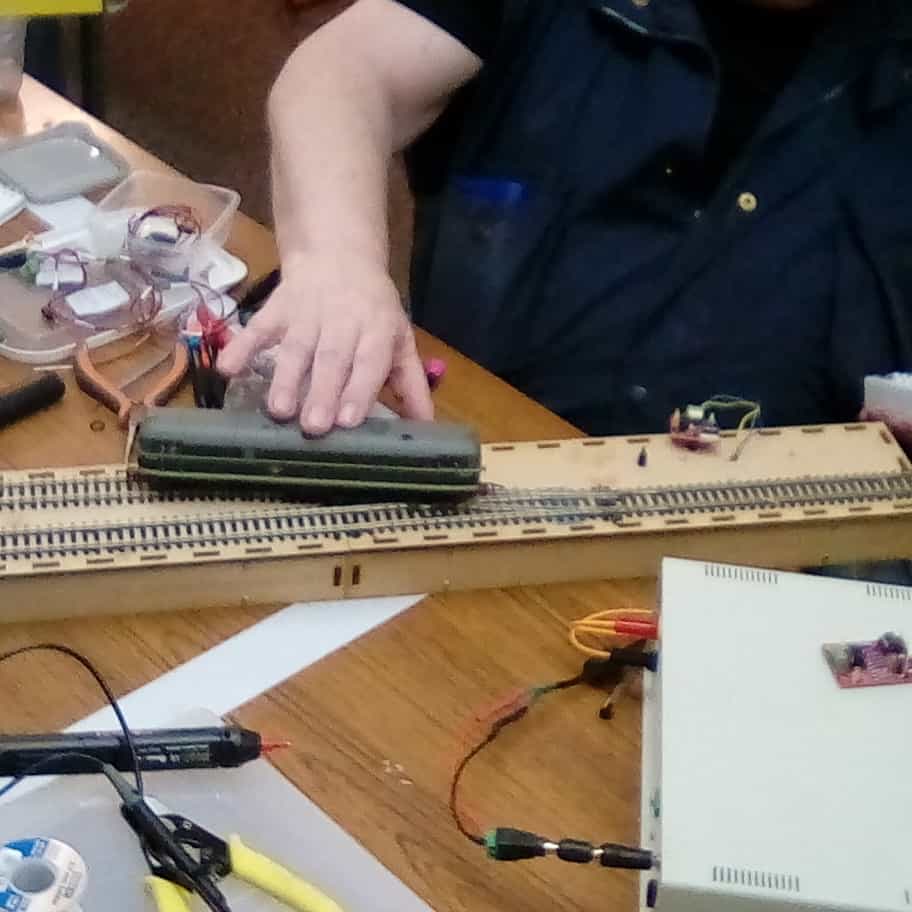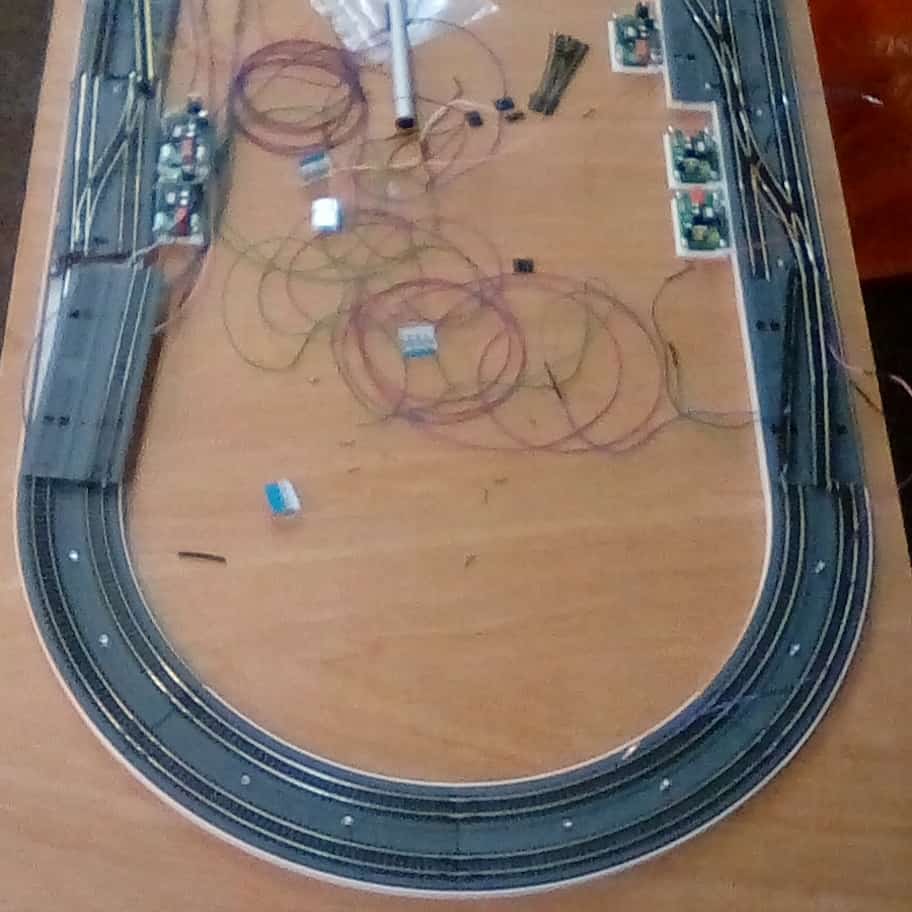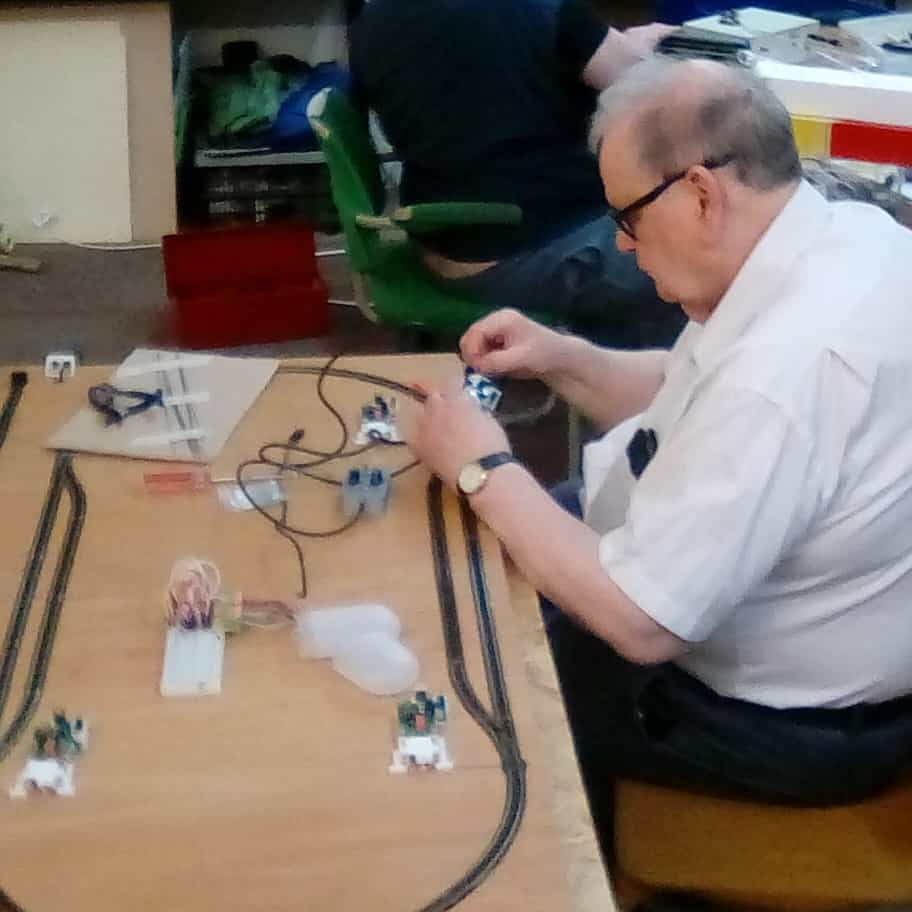
On the first table, Malcolm installed the fourth point this afternoon, after handing round the cakes that he had brought to celebrate his 75th.
The photographer was only able to take this shot after Allan had, already, eaten the first of the cakes!
Test Board One has now four active points. We will now refer to these small experimental boards as test boards in order to distinguish them from the test tracks that are available for use at the back of the clubroom.
The next step, the addition of an automatic controller, was discussed.
On the second table, Ray seemed to be running the test and repair shop.
The record on frog juicers was not great, only two of the five survived the tests.
He had also brought two DCC controllers to fix, only to find that the bumpy bus journey seemed to have magically cured the faults.
A sad and immobile shunter loco failed to respond to Ray’s ministrations and was going to have to be referred to the loco surgeon in chief – Chairman Paul.
Allan tried to fix Ray C’s DCC board, without success. It is going to need some serious surgery!


Allan made some progress on Test Board Two.
The new 3D printed point sections were added and the dropper wires were threaded through the ballast.
This end to end layout will have five points, allowing up to four trains to traverse the twin tracks from one end to the other.
Servo motors under the track are used to change the points. The servo controller boards are the same type as was used on Test Board One.
It is clear, even at this stage, that there is much scope for confusing the various wires as they emerge at the end of the track. The layout will be divided into eight sections, each of which is completely isolated from its neighbours. The current thinking is that 3D printed cable marker will be produced to that the pairs of wire to each section can be easily iidentified.

